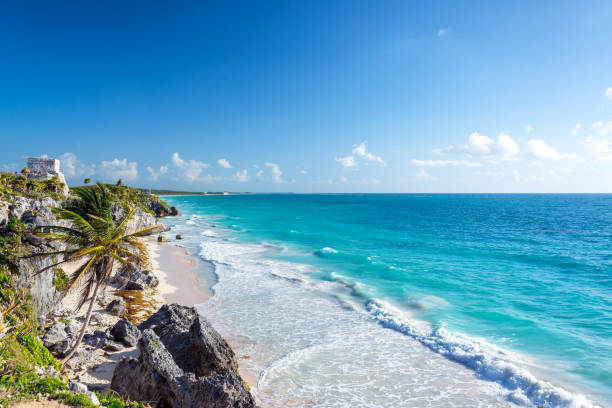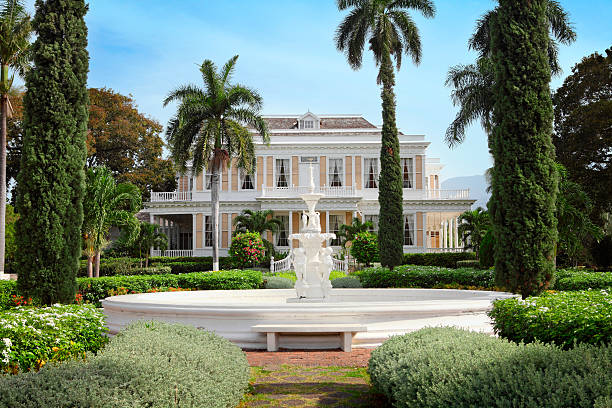Mexico City: A Vibrant Metropolis at the Crossroads of Tradition and Modernity
Historical Landmarks in Mexico City
Mexico City is a truly unique destination that seamlessly blends the old and the new. With a rich history
spanning over centuries, the city is home to numerous historical landmarks that offer a glimpse into its

fascinating past. Here are some of the must-visit landmarks in Mexico City:
National Palace
Located in the heart of the city’s historic center, the National Palace is a symbol of political power in Mexico.
Built on top of an Aztec palace, the building showcases stunning murals by renowned painter Diego Rivera, depicting
the country’s history and culture.
Templo Mayor
The Templo Mayor is an archaeological site that once served as the main temple of the Aztecs. Excavated in the
early 20th century, visitors can explore the ruins and learn about the religious practices of this ancient
civilization.
Chapultepec Castle
Situated within the expansive Chapultepec Park, Chapultepec Castle is a magnificent structure that offers stunning
panoramic views of Mexico City. Originally built as a residence for Mexican emperors, it now houses the National
History Museum and showcases a collection of artwork, furniture, and historical artifacts.
Xochimilco
Known as the Venice of Mexico, Xochimilco is a UNESCO World Heritage site and a popular destination for tourists
and locals alike. Visitors can take a colorful trajinera (a traditional Mexican boat) along the ancient Aztec
canals while enjoying live music, delicious food, and a vibrant atmosphere.

Mexico City Tourism
Mexico City has become a top tourist destination in recent years, attracting millions of visitors from around the
world. The city’s blend of rich history, cultural diversity, and vibrant atmosphere offers a unique and
unforgettable experience for travelers. Here are some of the reasons why Mexico City should be on your travel
itinerary:
Museums and Art Galleries
Mexico City is home to a wide range of world-class museums and art galleries. From the renowned National Museum
of Anthropology, which houses an extensive collection of pre-Columbian artifacts, to the Frida Kahlo Museum,
showcasing the life and work of the iconic Mexican artist, there is something to cater to every interest. Art
lovers will also appreciate the contemporary art scene, with galleries showcasing both local and international
talent.
Ancient Ruins and Archaeological Sites
The city’s proximity to ancient ruins and archaeological sites is another major draw for tourists. Just outside
the city, visitors can explore the ancient city of Teotihuacan, famous for its massive pyramids and intricate
murals. The site provides a fascinating glimpse into the lives of the Aztecs and is a must-visit for history
enthusiasts.
Vibrant Street Life
Mexico City is known for its vibrant street life and bustling markets, offering a sensory overload of sights,
sounds, and flavors. From the colorful Mercado de la Merced, where vendors sell everything from fresh produce to
traditional crafts, to the hip neighborhoods of Condesa and Roma, lined with trendy cafes, restaurants, and bars,
the city has something to satisfy every taste.
Architectural Marvels
The city is a treasure trove of architectural marvels, showcasing a mix of colonial, Art Nouveau, and modernist
styles. The iconic Palacio de Bellas Artes is a prime example of Art Nouveau architecture and hosts a range of
cultural performances. Modernist gems like the Torre Latinoamericana offer breathtaking views from their
observation decks, allowing visitors to take in the sprawling cityscape.
Traditional Mexican Cuisine
One cannot talk about Mexico City without mentioning its culinary delights. The city is a haven for food lovers,
offering a wide array of traditional Mexican dishes that showcase the country’s diverse culinary heritage. Here
are some must-try dishes when visiting Mexico City:
Tacos al Pastor
Tacos al Pastor are a staple of Mexican cuisine and a must-try when in Mexico City. This dish consists of thinly
sliced marinated pork, cooked on a vertical spit, and served in a warm tortilla with pineapple, onion, and
cilantro. The flavors and textures combine to create a mouthwatering taste sensation.
Mole Poblano
Mole Poblano is a complex and rich sauce made with chili peppers, chocolate, and various spices. It is typically
served over chicken or turkey and is a true representation of the fusion of indigenous and Spanish influences in
Mexican cuisine.
Tamales
Tamales are a traditional Mexican dish made of masa (corn dough) filled with various ingredients such as meat,
cheese, or vegetables. Wrapped in a corn husk and steamed to perfection, tamales make for a delicious and
satisfying meal.
Pozole
Pozole is a hearty and flavorful soup made with hominy corn and meat (usually pork or chicken). Topped with
shredded lettuce, radishes, onion, and lime, it is a comforting dish that is often enjoyed during festive
occasions.
Cultural Diversity in Mexico City
Mexico City is a melting pot of cultures, representing the diverse heritage of the Mexican people. The city’s
cultural diversity is reflected in its architecture, cuisine, music, and art. Here are some of the cultural
highlights that make Mexico City truly unique:
Fiestas and Celebrations
Mexicans are known for their love of celebrations, and Mexico City is no exception. From the colorful Day of the
Dead festivities, where locals honor their deceased loved ones, to the vibrant Independence Day celebrations with
parades and fireworks, the city comes alive with music, dance, and a festive spirit.
Street Art
Mexico City has become a global hotspot for street art, with its walls and buildings serving as canvases for
talented artists. Walking through neighborhoods like Roma and Condesa, visitors can admire an array of vibrant and
thought-provoking murals that reflect the social and political issues facing Mexican society.
Cultural Neighborhoods
Each neighborhood in Mexico City has its own distinct character and charm. From the colonial architecture of
Coyoacan, where Frida Kahlo’s Casa Azul is located, to the bohemian vibes of San Angel, known for its art
galleries and cobblestone streets, exploring these neighborhoods provides a deeper understanding of the city’s cultural fabrics
Indigenous Traditions

The indigenous heritage of Mexico is deeply rooted in the fabric of the city. Visitors can witness traditional
rituals and ceremonies performed by indigenous groups at sites such as the Templo Mayor or experience vibrant
indigenous markets like the Mercado de Sonora, where traditional crafts and herbal remedies are sold.
Mexico City is a vibrant metropolis that seamlessly combines tradition and modernity. With its rich history,
diverse cultural heritage, and delectable cuisine, it offers a unique and unforgettable experience for
travelers. Whether you’re exploring historical landmarks, immersing yourself in the city’s cultural diversity, or
indulging in traditional Mexican dishes, Mexico City is sure to leave a lasting impression.






